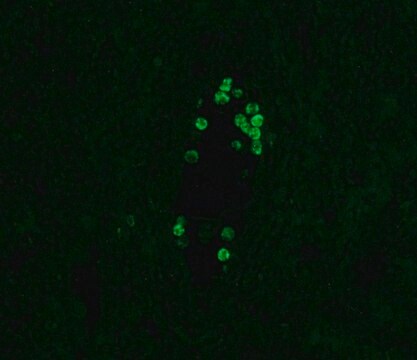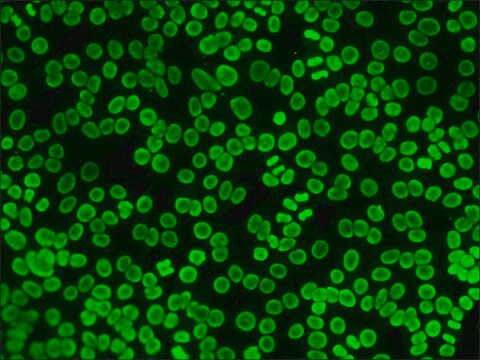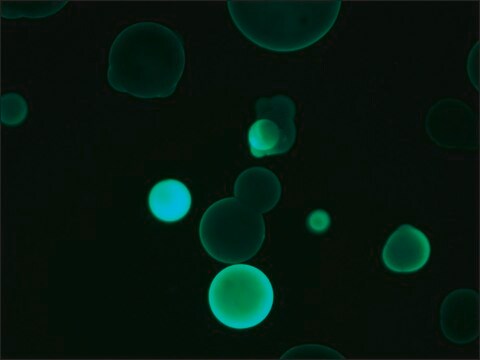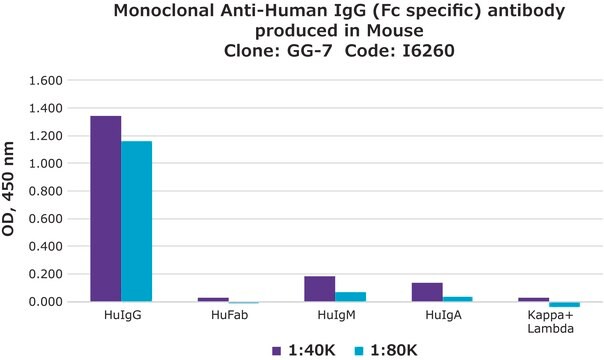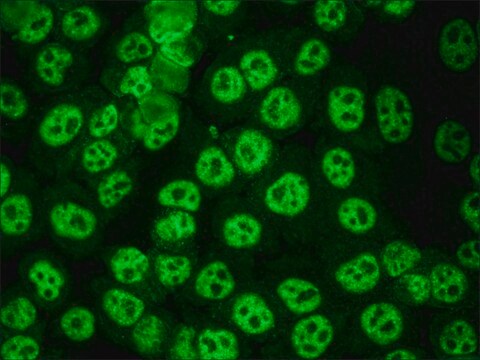Wichtige Dokumente
F5016
Anti-Human IgG (Fc specific)−FITC antibody, Mouse monoclonal
clone HP-6017, purified from hybridoma cell culture
Synonym(e):
Monoclonal Anti-Human IgG (Fc specific)
About This Item
Empfohlene Produkte
Biologische Quelle
mouse
Konjugat
FITC conjugate
Antikörperform
purified from hybridoma cell culture
Antikörper-Produkttyp
secondary antibodies
Klon
HP-6017, monoclonal
Form
buffered aqueous solution
Speziesreaktivität
rabbit, sheep, horse (IgG), goat, human
Lagerbedingungen
protect from light
Methode(n)
dot immunobinding: 1:16
particle immunofluorescence: 1:16
Isotyp
IgG2a
Versandbedingung
dry ice
Lagertemp.
−20°C
Posttranslationale Modifikation Target
unmodified
Suchen Sie nach ähnlichen Produkten? Aufrufen Leitfaden zum Produktvergleich
Allgemeine Beschreibung
Spezifität
Anwendung
- Fluorescent Dot Immunobinding Assay (F-DIBA)
- Particle Immunofluorescent Assay (F-IFMA)
- flow cytometry
Biochem./physiol. Wirkung
Physikalische Form
Haftungsausschluss
Sie haben nicht das passende Produkt gefunden?
Probieren Sie unser Produkt-Auswahlhilfe. aus.
Signalwort
Danger
H-Sätze
Gefahreneinstufungen
Resp. Sens. 1 - Skin Sens. 1
Lagerklassenschlüssel
12 - Non Combustible Liquids
WGK
WGK 3
Flammpunkt (°F)
Not applicable
Flammpunkt (°C)
Not applicable
Hier finden Sie alle aktuellen Versionen:
Besitzen Sie dieses Produkt bereits?
In der Dokumentenbibliothek finden Sie die Dokumentation zu den Produkten, die Sie kürzlich erworben haben.
Kunden haben sich ebenfalls angesehen
Unser Team von Wissenschaftlern verfügt über Erfahrung in allen Forschungsbereichen einschließlich Life Science, Materialwissenschaften, chemischer Synthese, Chromatographie, Analytik und vielen mehr..
Setzen Sie sich mit dem technischen Dienst in Verbindung.





